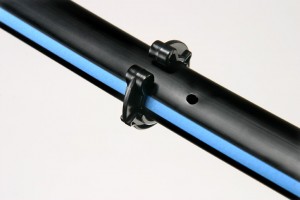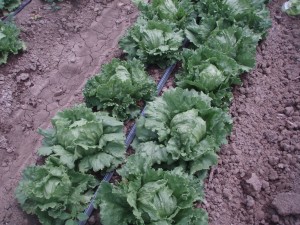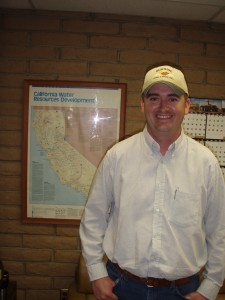Salinas Valley Farmers Solve Water Issues with Drip Irrigation and Conservation
 Charged with the issue of seawater intrusion, the Salinas Valley in California has done several things to all but eliminate the issue. First, two reservoirs were constructed to recharge the underground aquifer. Then, a wastewater treatment plant was built to enable the use of recycled water for irrigation. And recently, a rubber dam was installed to divert surface water for irrigation. Along with these attempts to improve the region’s water supply, Salinas Valley farmers have turned to drip irrigation and conservation to help solve their water issues.
Charged with the issue of seawater intrusion, the Salinas Valley in California has done several things to all but eliminate the issue. First, two reservoirs were constructed to recharge the underground aquifer. Then, a wastewater treatment plant was built to enable the use of recycled water for irrigation. And recently, a rubber dam was installed to divert surface water for irrigation. Along with these attempts to improve the region’s water supply, Salinas Valley farmers have turned to drip irrigation and conservation to help solve their water issues.
In a recent article in AgAlert, reporter Bob Johnson interviewed Salinas Valley farmers to see how they have reduced seawater intrusion. Turns out that the region’s conversion to drip irrigation and focus on conservation has a lot to do with it. Bob writes, “Twenty years ago, less than 3 percent of Salinas Valley vegetable acreage was under drip irrigation…(but) the water agency’s most recent survey shows that by 2012, drip irrigation was being used on nearly 60 percent of the vegetable acreage.” Bob goes on to write that between drip irrigation, water supply projects, and other conservation techniques, such as soil moisture sensors and flow meters, the Salinas Valley has even allowed the underground water table to rise.
Salinas Valley Farmers Solve Water Issues with Drip Irrigation and Conservation Read More »

 This week, Toro announced a new emitter flow rate for its popular BlueLine® PC dripline, the 0.26 GPH pressure-compensating (PC) emitter. This new 0.26 GPH pressure-compensating emitter is the latest addition to Toro’s other BlueLine PC flow rates (0.42, 0.53, and 1.00 GPH).
This week, Toro announced a new emitter flow rate for its popular BlueLine® PC dripline, the 0.26 GPH pressure-compensating (PC) emitter. This new 0.26 GPH pressure-compensating emitter is the latest addition to Toro’s other BlueLine PC flow rates (0.42, 0.53, and 1.00 GPH).  Larry Standage has reaped all the typical benefits of converting to drip irrigation with his onions in Vale, Oregon, including increased yields, reduced runoff, and less use of water, fertilizer, and labor. But the most important benefit is that Standage builds customer loyalty as a result of a higher quality, more uniform crop.
Larry Standage has reaped all the typical benefits of converting to drip irrigation with his onions in Vale, Oregon, including increased yields, reduced runoff, and less use of water, fertilizer, and labor. But the most important benefit is that Standage builds customer loyalty as a result of a higher quality, more uniform crop. Increasing water costs and water scarcity are becoming critical issues that are affecting the bottom lines for growers’ businesses. Whether these issues are the result of droughts, environmental concerns, or water regulations, the fact is that growers need to improve their water management techniques.
Increasing water costs and water scarcity are becoming critical issues that are affecting the bottom lines for growers’ businesses. Whether these issues are the result of droughts, environmental concerns, or water regulations, the fact is that growers need to improve their water management techniques. Chuck Herrin manages Worth Farms in California’s Westlands Water District. Founded by his grandfather, a custom harvester turned farmer, Worth Farms today grows 4,500 acres of drip irrigated crops including 3,500 acres of processing tomatoes.
Chuck Herrin manages Worth Farms in California’s Westlands Water District. Founded by his grandfather, a custom harvester turned farmer, Worth Farms today grows 4,500 acres of drip irrigated crops including 3,500 acres of processing tomatoes.